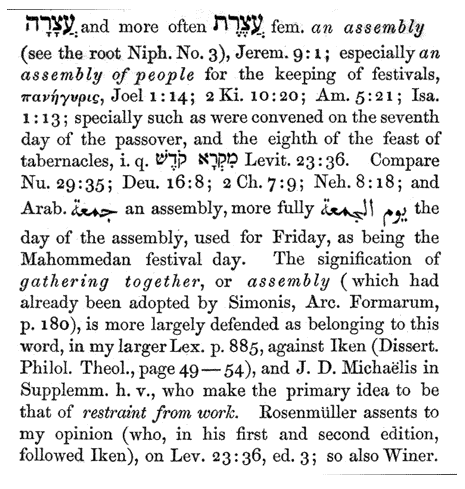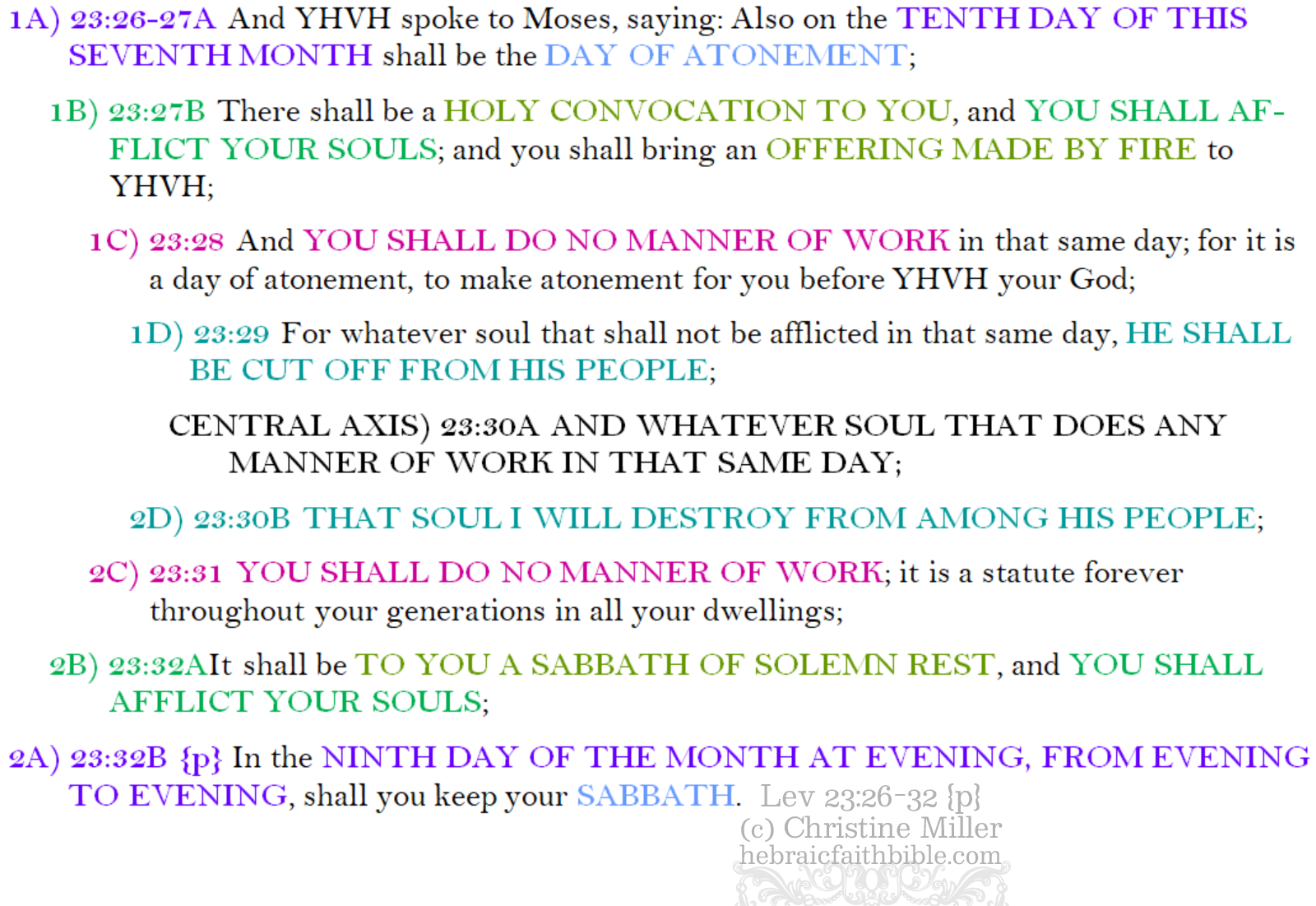In order to unlock the structure, I had to apply the teaching tool of Common theme. It seemed to me that the structure was forcing the B pairs together, but I could not understand at first how “sabbath” was supposed to pair with “holy convocation” and “offering made by fire.” It seemed the mentions of sabbath should pair with doing no manner of work, right?
But then I noticed a discrepancy between the JPS (Hebrew Bible in English) translation and the KJV translation. In verse 32, the JPS says it is to be a sabbath of solemn rest, while the KJV merely says it is to be a sabbath of rest. Why is the “solemn” in there? I did a quick search for “solemn” in Torah, and the majority of the time the King James uses it in passages having to do with Feast day instructions. But the King James omits it here, while the JPS includes it. From the Blue Letter Bible:
And looking up Strong’s H7677:
Ah! The repeat of “sabbath” in the Hebrew intensifies it to mean a great or solemn sabbath, used especially of the special annual sabbaths. But then the KJV does include “solemn” in its translation of Lev 23:36 about the 8th Day of Assembly:
Seven days you shall bring an offering made by fire to YHVH; on the eighth day there shall be a holy convocation to you; and you shall bring an offering made by fire to YHVH; it is a day of solemn assembly; you shall do no manner of servile work. Lev 23:36 KJV modernized
 “Solemn assembly” in verse 36 is Strong’s H6116, atsarah, a concrete noun meaning a solemn assembly. –>
“Solemn assembly” in verse 36 is Strong’s H6116, atsarah, a concrete noun meaning a solemn assembly. –>
Notice that the 8th Day of Assembly, a solemn assembly, included the instruction of holy convocation and offering made by fire, as does verse 27 in our 1B pair, as well as the solemn restraint from work, as does verse 32 in our 2B pair.
The common theme teaching tool revealed that the solemn sabbath belongs to the feast day solemn assemblies which include holy convocations and the offering made by fire to YHVH.



















Leave a Reply